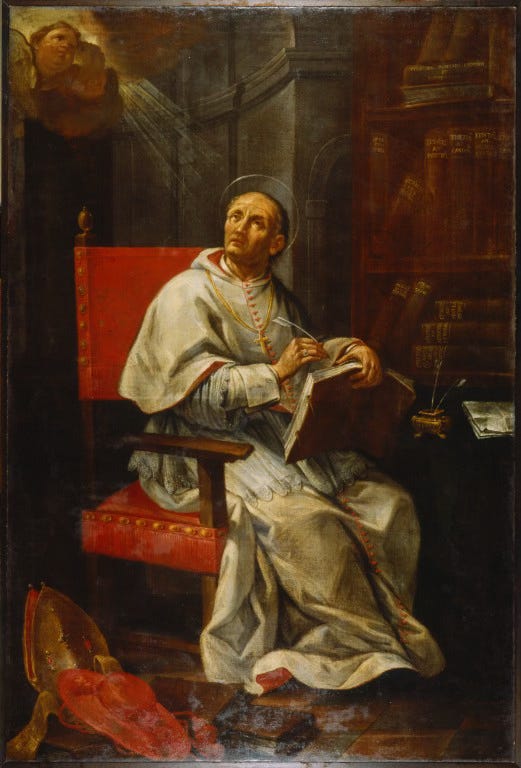Borges’ “The Other Death” and Canto XXI of Dante’s Paradiso
In his story “The Other Death” Jorge Luis Borges recounts the two lives of one Pedro Damián, remembered both as the shamed coward and courageous martyr of the 1904 battle of Masoller in Uruguay. The narrator surmises that Damián changed his past, a feat that not even God can perform, at least according to St. Thomas Aquinas and most other medieval philosophers. But the narrator claims that Pedro had the support of his namesake, Pietro Damiani (or Peter Damian), the 11th century author of the De divina omnipotentia, a work which may argue for God’s ability to change or annul the past. That reading is contested, but the Damian’s treatise, occasioned by a remark of St. Jerome’s that God cannot restore virginity, does suggest the possibility that divine omnipotence entails the potential of overturning past events, even if God would never exercise this power.

Borges’ narrator states that two lines on the problem of identity in canto XXI of Dante’s Paradiso made him seek out the elder Damian’s treatise after learning of his contemporary Damián’s (if indeed this is his name; the narrator expresses some doubt) second and perhaps true death. Not the first death many years after his desertion at Masoller, but the new death in the midst of a charge into the enemy front.
The narrator does not identify these lines but they must be 121-123 (Italian text and translation from The Divine Comedy of Dante Alighieri, translated by Allen Mandelbaum):
“In quell loco fu’ io Pietro Damiano,
e Pietro Peccator fu’ ne la casa
di Nostra Donna in sul lito adriano.”
“There I was known as Peter Damian
and on the Adriatic shore, was Peter
the Sinner when I served Our Lady’s House.”
The Italian is ambiguous. Is the speaker saying that he is Peter Damian, and that Peter the Sinner, with whom he has been confused, was someone else? Or is he saying that he was both Peter Damian and Peter the Sinner? Some commentators claim that Dante had fallen for a common mistake that confused Damian with the austere, severe abbot, the founder of a monastery in Ravenna in 1096, 24 years after Peter Damian’s death.
Perhaps, though, Borges’ narrator is suggesting that Dante was not mistaken. Rather, Peter the Sinner and Peter Damian were two alternative pasts of the same man. Was Peter Damian the new past of the more obscure Peccator? Or more likely was the Sinner the preferred life of the humble Damian, who renounced his worldly life as a cardinal and returned to the simpler cloistered life, just as Pedro Damián virtually erased his identity as a coward and assumed the life of a hero?
Borges’ story is something of a parable illustrating the ways that language can be used to efface or alter memory and thereby undo or change the past. That one of the last men to remember the cowardly Damián’s life was a bookseller is significant. It is the bookseller’s death that effectively erases that life’s traces. The story is a powerful reminder of the political uses and abuses of the past and of the fragility of memory.



